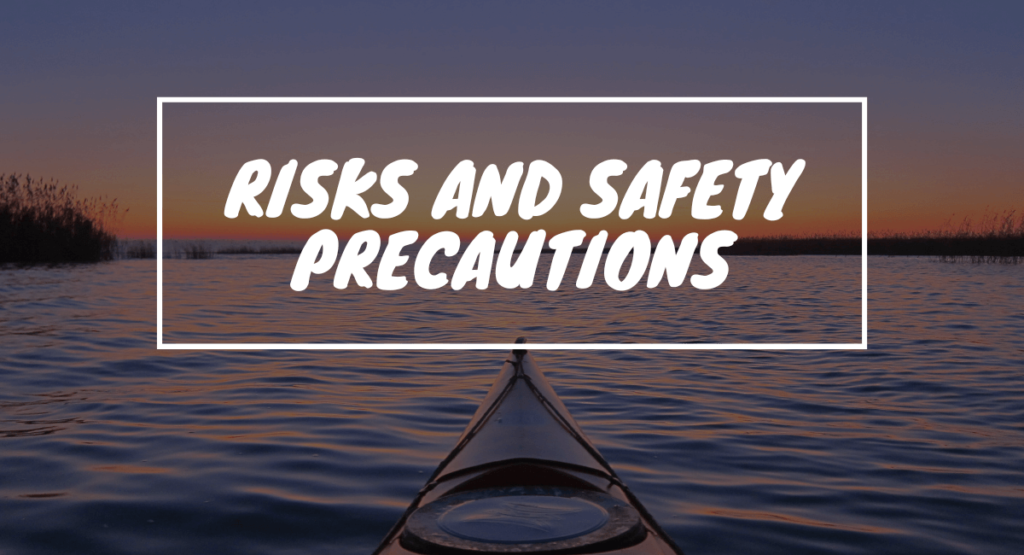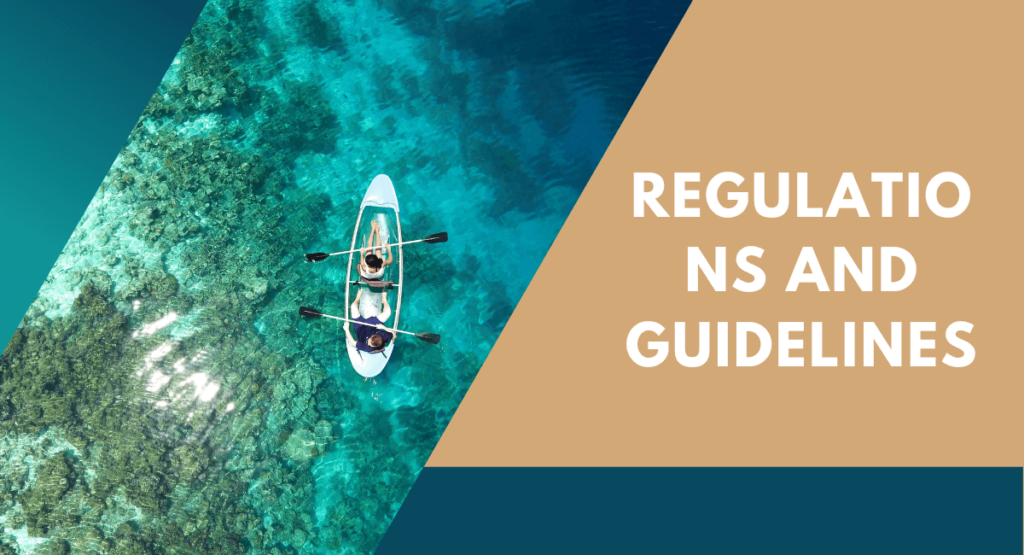It is safe to kayak in the Hudson River as long as you take necessary precautions and follow safety guidelines. The Hudson River, located in the northeastern United States, is a popular destination for kayaking enthusiasts.
With its stunning scenery and accessible entry points, many people are drawn to explore its waters. However, before embarking on a kayaking adventure, it is important to prioritize safety. Assessing weather conditions, wearing appropriate safety gear such as life jackets, and being aware of boat traffic are essential precautions to take.
Additionally, checking water quality and being mindful of any potential hazards such as strong currents or debris can help ensure a safe and enjoyable experience. By taking these precautions, kayakers can confidently navigate the Hudson River and enjoy its beauty firsthand.
Exploring The Hudson River
There is something magical about the Hudson River, a storied waterway that has played a vital role in the history and culture of New York City. Kayaking in this iconic river offers a unique opportunity to explore its beauty and rich heritage while embracing the thrill of adventure.
Historical Significance Of The Hudson River
The Hudson River has been a witness to centuries of historical events, serving as a vital trade and transportation route for indigenous people, European settlers, and early American explorers. Its shores are dotted with significant landmarks, including the revered Statue of Liberty and the historic Ellis Island, making it an unparalleled destination to delve into the nation’s past.
Environmental Factors To Consider
When venturing out to kayak in the Hudson River, it’s crucial to be mindful of the environmental factors at play. The river, with its diverse ecosystem and breathtaking natural scenery, is a habitat for various wildlife species, including migratory birds, fish, and marine mammals. Paddlers should prioritize the conservation of this ecosystem and maintain a respectful distance from wildlife to minimize disturbance.
Risks And Safety Precautions

Potential Hazards Of Kayaking In The Hudson River
Kayaking in the Hudson River can be an exhilarating experience, allowing you to explore the scenic beauty of the river and enjoy the tranquility of nature. However, it is essential to be aware of the potential hazards that come with kayaking in this environment. Understanding these risks will help you take appropriate safety measures, ensuring a secure and enjoyable kayaking experience.
-
Strong Currents: The Hudson River is known for its variable and unpredictable currents, which can be strong at times. These currents can make paddling challenging and can potentially sweep you away from your intended route. It is crucial to constantly be aware of the current conditions and adjust your paddling technique accordingly.
-
Boat Traffic: The Hudson River is a popular waterway, utilized for various recreational and commercial activities. Boats, ferries, and barges can be present, creating a risk of collision for kayakers. Keeping a lookout for other vessels and adhering to navigational rules is essential to ensure your safety.
-
Weather Conditions: The weather on the Hudson River can change rapidly, and kayakers need to be prepared for sudden storms, strong winds, and temperature fluctuations. Checking the weather forecast before heading out and equipping yourself with appropriate clothing and gear is vital in managing these weather-related risks.
-
Water Quality: The Hudson River has made significant progress in improving water quality; however, in certain areas, there may still be concerns about pollution and bacterial contamination. It is advisable to avoid ingesting the water and maintain good hygiene practices to minimize any health risks.
Safety Measures To Ensure A Secure Kayaking Experience
To mitigate the potential risks associated with kayaking in the Hudson River, it is crucial to take certain safety measures. By implementing these precautions, you can ensure a secure and enjoyable kayaking experience:
-
Wear a Personal Flotation Device (PFD): Wearing a properly fitted PFD is the most important safety precaution you can take while kayaking. Ensure that your PFD is approved by the U.S. Coast Guard and that you wear it at all times.
-
Be Aware of Local Regulations: Familiarize yourself with the specific regulations and guidelines set by local authorities governing kayaking in the Hudson River. Understanding and following these rules will enhance your safety and ensure compliance with the law.
-
Take Kayaking Lessons: If you are new to kayaking or lack experience, consider taking kayaking lessons to acquire the necessary skills and knowledge. Learning proper paddling techniques and rescue methods can greatly enhance your ability to handle potential hazards.
-
Inform someone of your Plans: Before embarking on your kayaking adventure, inform a trusted friend or family member about your intended route and estimated return time. This way, someone will be aware of your plans and can raise an alarm if necessary.
-
Stay Hydrated and Nourished: Kayaking can be physically demanding, so ensure you stay hydrated by carrying an ample supply of water and maintaining a proper diet during your trip. Staying nourished and well-hydrated will help you maintain focus and energy throughout your kayaking experience.
Regulations And Guidelines

Discover the Regulations and Guidelines for Kayaking in the Hudson River to ensure a safe and enjoyable experience. By following the set rules, paddlers can navigate the waters confidently and responsibly. Stay informed and adhere to the safety measures in place to make the most of your kayaking adventure.
Local Laws And Restrictions For Kayaking
When it comes to enjoying the thrill of kayaking in the Hudson River, it’s essential to be aware of the local laws and restrictions that are in place for your safety and the protection of the environment. The Hudson River is a popular destination for kayakers due to its stunning views and diverse wildlife. However, before you hit the water, make sure you are familiar with the regulations and guidelines that govern kayaking activities in this area.
To ensure a safe and enjoyable experience, it is crucial to follow the laws set forth by local authorities. One of the main regulations for kayaking in the Hudson River is the requirement to wear a personal flotation device (PFD) at all times while on the water. This is not only a legal requirement but also a necessary safety precaution, as it can save lives in case of an accident or unexpected circumstances.
Furthermore, it is important to be aware of any restrictions on certain areas of the river. Some sections may be designated as off-limits or have specific rules that need to be followed. These restrictions are put in place to protect sensitive habitats, and wildlife, and to ensure the safety of both kayakers and other water users. It is crucial to respect these restrictions and to educate yourself about any limitations in the areas where you plan to kayak.
Best Practices Recommended By Authorities
While following local laws and restrictions is a must, there are also best practices recommended by authorities that kayakers should adhere to. These practices aim to enhance both safety and enjoyment for everyone on the water.
1. Know your skill level: Before venturing out onto the Hudson River, evaluate your own skill level as a kayaker. Stick to areas that align with your abilities and do not exceed your comfort zone.
2. Check the weather conditions: Always monitor the weather conditions before heading out. Strong winds, heavy rain, or thunderstorms can pose significant risks. If the weather is unfavorable or if there are warnings in place, it’s best to postpone your kayaking trip.
3. Plan your route: Familiarize yourself with the route you plan to take and make sure it is suitable for kayaking. Consider factors such as currents, tides, and potential hazards along the way. Planning can prevent unforeseen difficulties and ensure a smoother experience.
4. Share your plans: It is advisable to inform someone of your kayaking plans, including your intended route and estimated time of return. In the event of an emergency, this information can be vital for search and rescue teams.
5. Respect wildlife and the environment: The Hudson River is a thriving ecosystem, home to various species of fish, birds, and other wildlife. As a responsible kayaker, it is important to maintain a respectful distance from wildlife, avoid disturbing their habitats, and never litter in the water or on the riverbanks.
6. Practice proper kayaking techniques: To maximize safety, learn and practice proper kayaking techniques, including how to paddle efficiently, make turns, and perform self-rescue maneuvers. Taking a kayaking course or seeking guidance from experienced kayakers can help you improve your skills and confidence on the water.
By following these regulations, guidelines, and best practices, you can ensure a safe and enjoyable kayaking experience in the Hudson River. Remember, the key is to respect the rules, protect the environment, and prioritize your safety at all times.
Expert Insights And Recommendations

Kayaking is an exhilarating way to connect with nature and explore the beauty of the Hudson River. However, safety is paramount when venturing onto the water. Expert insights and recommendations from experienced kayakers can provide valuable guidance for a safe and enjoyable kayaking experience.
Advice From Experienced Kayakers
When seeking advice on kayaking in the Hudson River, experienced kayakers emphasize the importance of understanding the river’s currents, tides, and potential hazards. They recommend familiarizing yourself with the river’s conditions and being aware of changing weather patterns to ensure a safe outing. Additionally, seeking guidance from local paddling clubs or experienced kayakers can provide valuable firsthand knowledge of the river’s nuances and safety tips.
Tips For Safe Kayaking In The Hudson River
- Be mindful of weather forecasts and potential changes in weather conditions.
- Always wear a properly fitted personal flotation device (PFD) while kayaking.
- Stay informed about the river’s water quality and any potential pollutant advisories.
- Equip your kayak with navigation and safety gear, including a whistle, navigation lights, and a bilge pump.
- Observe vessel traffic and adhere to navigation rules to ensure a safe distance from larger watercraft.
Frequently Asked Questions On Is It Safe To Kayak In The Hudson River
Can You Kayak In The Hudson River?
Yes, kayaking is allowed in the Hudson River. Enjoy paddling along the scenic waterway with proper safety precautions.
How Do You Know If A River Is Safe To Kayak?
To know if a river is safe to kayak, check its water conditions, flow rate, and potential hazards. Consider consulting local authorities or experienced kayakers for guidance. Always prioritize safety, wear proper gear, and stay informed about the river’s current status.
Is The Water In The Hudson River Clean?
Yes, the water in the Hudson River is clean.
How Safe Is Kayaking?
Kayaking is generally safe, but precautions must be taken. Wear a life jacket, learn proper techniques, and be aware of weather conditions. Avoid kayaking alone and inform someone of your plans. Always stay alert and cautious to ensure a safe kayaking experience.
Conclusion
Kayaking in the Hudson River can be safe with proper precautions. By staying updated with water quality reports and following safety guidelines, enthusiasts can enjoy the diverse and scenic river. With the right preparation and awareness, paddlers can have a thrilling and memorable experience on the Hudson River.
